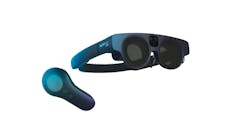Electric vehicles are still intriguing consumers, and in this hybrid-electric market Tesla leads the pack. U.S. consumers purchased an estimated 70,000 Tesla electric vehicles in the first half of 2020. While Elon Musk’s illustrious brand reportedly owns 80 percent of electric sales in the country, it isn’t the only one in the game. Toyota, GM, BMW, and others continue to forge ahead with hybrid and electric vehicle development. That means these vehicles are hitting repair bays with mixed reviews.
Some consumers and after-market professionals alike are hesitant to get onboard with electric, perhaps rightfully so. A lack of charging infrastructure is one reason why consumers might think twice before breaking from their internal combustion engines (ICE), in addition to concerns with driving range and cost.
Technicians, too, are sometimes hesitant to tackle this type of service simply because there isn’t much information out there to reference. Historically it hasn’t been easy to find trustworthy guidelines or communities to inform on best practices or standards for maintaining electric vehicles. I was somewhat surprised when I learned there are currently little to no requirements or standards in the U.S. for electrified vehicle work.
The good news is more information on this topic comes to light each day, and training standards are a work in progress. Read Scott Brown’s take on hybrid and electric vehicles, or as he calls them, “the future of all progressive shops,” on page 38. Brown notes that while hybrid and electric vehicles are showing up in repair bays regionally, this is an area of service that all future-facing technicians should keep tabs on. He includes some resources that anyone can tap into to learn more about these vehicles and their service requirements.
Like their ICE counterparts, electric vehicles are still comprised of tires, brakes, and suspension components, but it’s important that repair pros understand how their drivetrains differ as well as how to conduct safe and competent service on electrified models. When it comes to electrical repairs, tooling is important, too. Things like CAT rated products for electrical work, insulated hand tools, and gloves are designed to keep technicians safe during repairs. In addition, tools that help the vehicle’s HVAC system run at peak performance become even more essential when maintaining electric models.
Do you have customers who are proud owners of electric vehicles? If so, how has your business evolved to serve this niche, and what lessons are you learning along the way?



